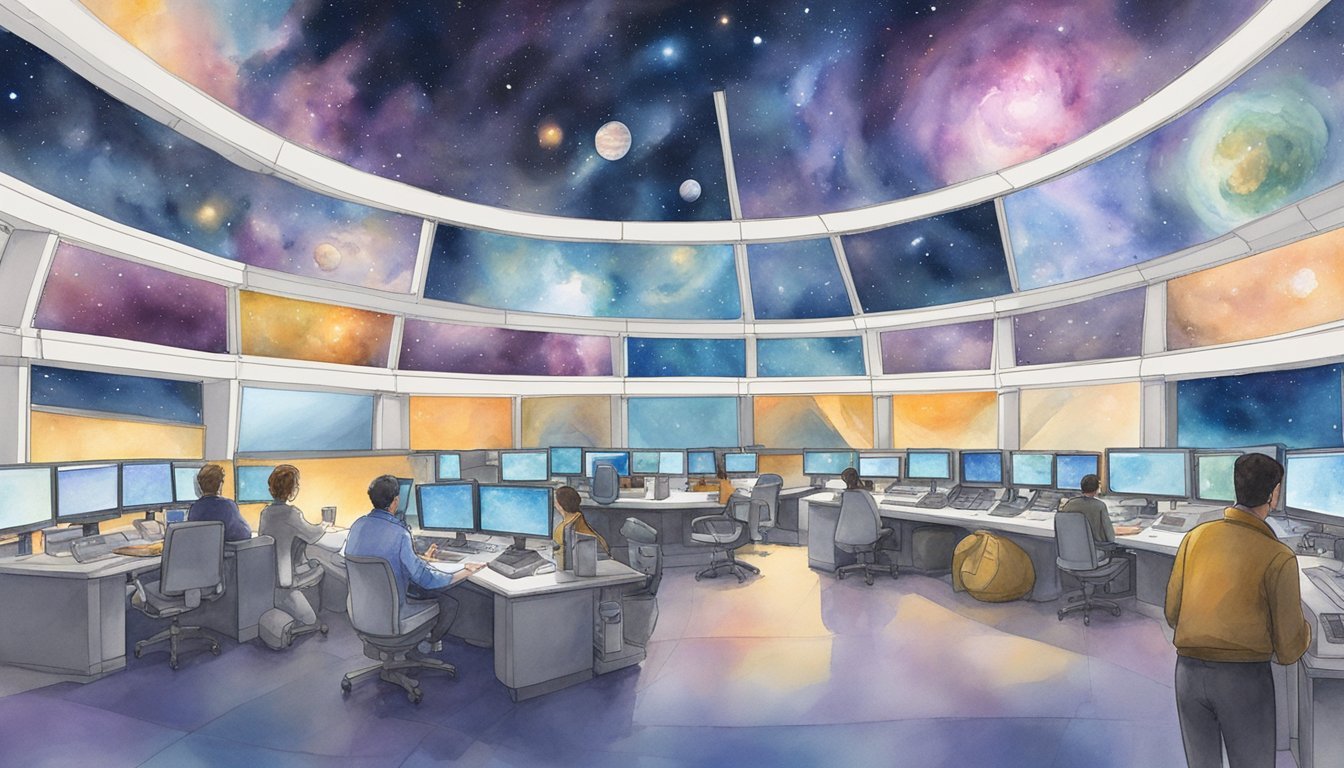Overview of JWST
The James Webb Space Telescope (JWST) represents a monumental leap in space exploration and astrophysics. It is spearheaded by NASA with significant contributions from the European Space Agency (ESA) and the Canadian Space Agency.
Design and Engineering
JWST’s design incorporates a large 6.5-meter primary mirror, significantly larger than its predecessor, the Hubble Space Telescope. This mirror is coated with gold to optimize its infrared reflection capabilities. The engineering behind JWST allows it to observe high-redshift objects, which are too old and too distant for Hubble to observe. Engineering marvels of the telescope include a tennis court-sized sunshield that protects its instruments from solar heat and light.
Launch and Mission Timeline
The JWST was launched on December 25, 2021, aboard an Ariane 5 rocket from French Guiana. Since its successful deployment, it has undergone a complex sequence of unfolding and calibration stages. In 2022 and 2023, its mission timeline centered around commissioning its instruments and beginning science operations, with an expectation that JWST will conduct astronomical observations for a decade or more.
JWST vs Hubble Comparison
While both telescopes have captured the imagination of the public and the scientific community, the JWST offers significant advancements. Compared to Hubble, Webb’s infrared capabilities allow it to see through dust clouds where stars are being born. The comparison with Hubble highlights JWST’s improved sensitivity and resolution, which enable it to study the atmospheres of exoplanets and the earliest galaxies formed after the Big Bang.
Scientific Discoveries and Image Gallery

The James Webb Space Telescope (JWST) has revolutionized our view of the cosmos with its advanced imaging capabilities. Through its collection of breathtaking images, the JWST has uncovered numerous phenomena, shedding light on the mysteries of the early universe, the mechanics behind galactic phenomena and star formation, as well as the intricacies of deep field observations.
Early Universe Discoveries
The JWST’s powerful instruments, including the Near Infrared Camera (NIRCam) and the Mid-Infrared Instrument (MIRI), have opened a window into the early universe, capturing light from galaxies formed over 13 billion years ago. These images offer clues on how galaxies form and evince the existence of supermassive black holes in nascent galactic structures.
Galactic Phenomena and Star Formation
Photographs of star-forming regions such as the Carina Nebula have illustrated the complex processes that lead to the birth of stars. Webb science images reveal “Cosmic Cliffs” and stellar nurseries in unprecedented detail, providing insights into both the beauty and violence of star formation within our own galaxy and beyond.
Deep Field Observations and Findings
JWST’s first deep field is the galaxy cluster SMACS 0723, acted as a gravitational lens, magnifying distant galaxies behind it and allowing a peek into the universe’s past. These deep field observations have been pivotal in increasing our understanding of the universe’s evolution and the formation of large-scale cosmic structures.

